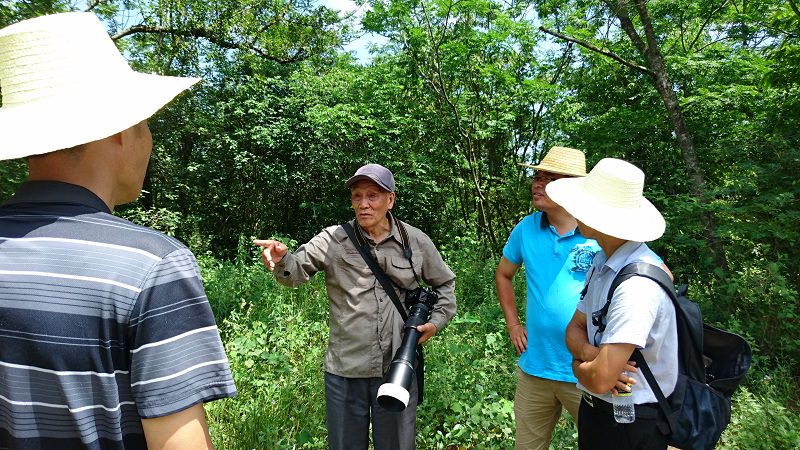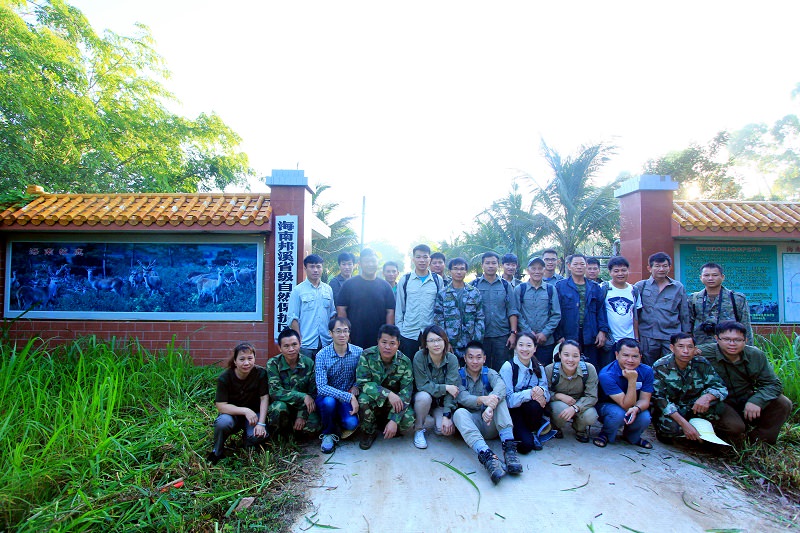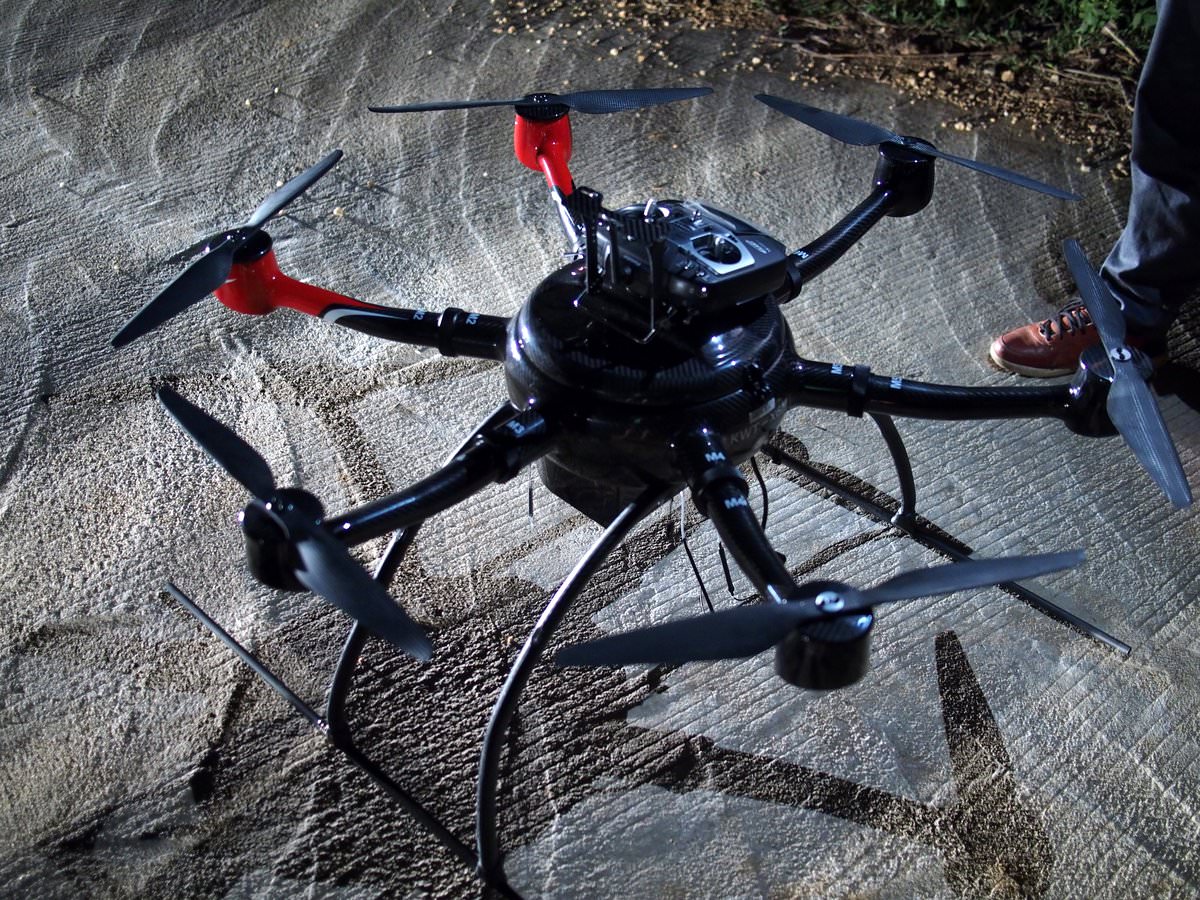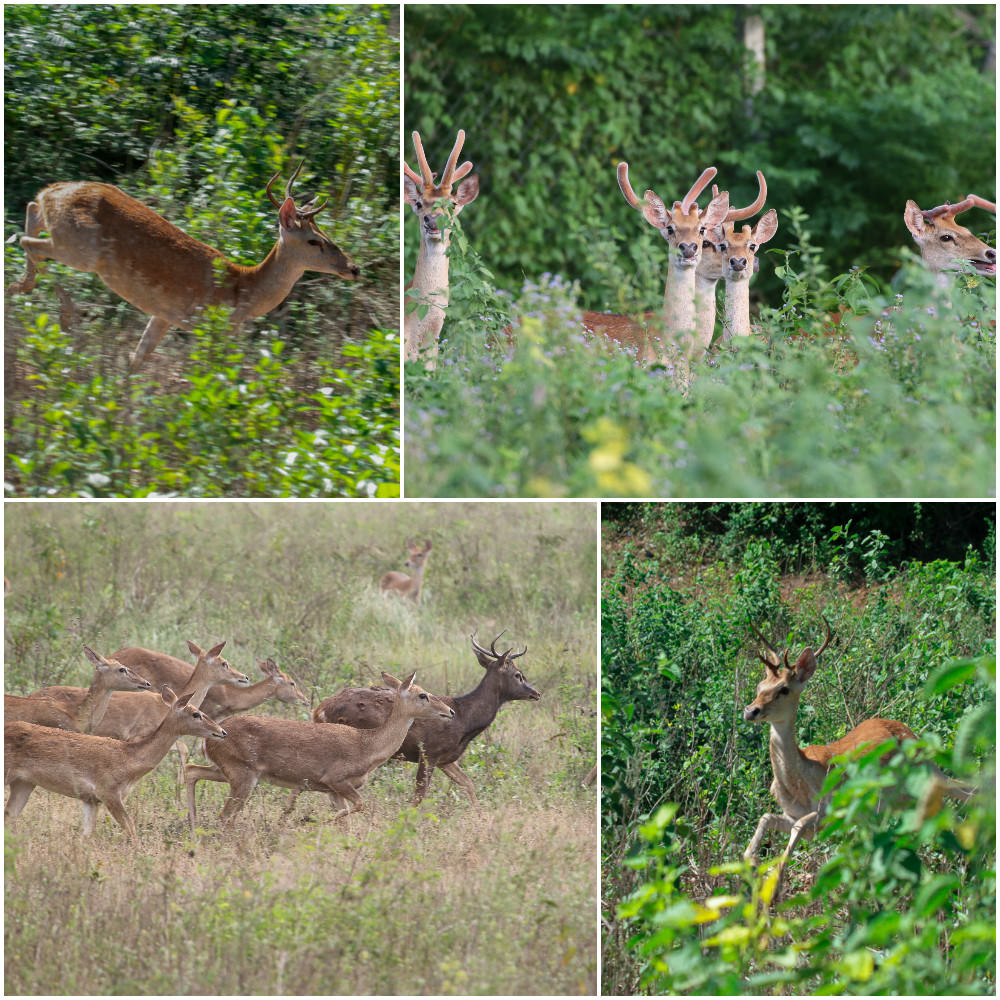Concerted effort to save the Hainan Eld’s Deer
Bangxi is a tiny nature reserve on Hainan Island, yet it is one of the last refuges for Eld’s Deer (Rucervus eldii) in China. In China, Eld’s Deer is found nowhere else but Hainan, and is a Class I Key Protected Species. It was once widely distributed across the island, but due to rampant poaching and habitat destruction, its population shrank to the dozens in the 1970s. Thanks to Prof. Yuan Xicai and his team for dedicating decades of effort in studying and protecting the remaining population, the number had bounced back to over a thousand. Prof. Yuan has since been called “Father of Hainan Eld’s Deer”.
Twenty years into his retirement, Prof. Yuan is still deeply concerned about the status of the Eld’s Deer. We were honoured to have him lead a team of over 30 in carrying out the latest Bangxi Eld’s Deer and biodiversity survey. The survey team composed of members of Kadoorie Conservation China, a department of KFBG, all staff of Bangxi Nature Reserve, and some experienced field staff from various nature reserves in Hainan. The survey was conducted from 30 May to 2 June. In order to maximise survey accuracy, a range of methods were applied, including direct counting, bait and observe, camera trapping, aerial imaging and thermal sensing technique.

Prof. Yuan Xicai, approaching his 80th birthday, giving advice to the survey team

The survey team took a group photo in front of the main gate at Bangxi Nature Reserve

It was physically very demanding to carry out the Eld’s Deer survey in the scorching heat
The survey took place during the driest season of Hainan; temperature rose to a staggering 36︒C under the scorching sun. The team worked from 6am to 6pm daily, as well as in the night for surveying other taxa and for applying thermal imagery; the physical demand was enormous. Fortunately, our hard work has yielded satisfactory results -- the Eld’s Deer population is proven to be stable and healthy, highlighting the importance of Bangxi in deer conservation. To ensure effective protection, fences were erected along the reserve boundaries. But apart from the limited provision of salt and grass during lean seasons, these deer are living in a wild state.
Drone with thermal imagery function was tested for its suitability for wildlife survey

Technician operating the drone for a night survey

Eld’s Deer is a shy and elegant animal. It moves swiftly across dense vegetation by jumping gracefully, sometimes reaching two meters in height. Locally, the deer is known as “Fei-lu”, meaning “flying-deer”.
Based on its population number alone, Eld’s Deer has recovered from the verge of extinction. Nevertheless, the threats that it is facing still exist. The almost superstitiously belief of the medicinal properties of Eld’s Deer by some are threatening deer populations; almost all lowland habitats have been modified for economic development. The future of Eld’s Deer is nowhere near safe. In light of this, KCC is co-organising the International Workshop for Eld’s Deer Conservation with the Provincial Forestry Department of Hainan in the coming September. The aim is to share experience and ensure cohesive and effective conservation actions for the Eld’s Deer worldwide. The workshop will be attended by overseas and Chinese deer specialists, and representatives of related government agencies and nature reserves. Nature conservation is not only the career of a small group of people; it should be the responsibility of the society. We are looking forward to more support and engagement from the society.

Thermal imagery could detect warm-blooded animals at night and the result is shown on a screen. Here, the white dots in the centre indicate the Eld’s Deer.
Acknowledgement: Thermal imaging techniques provided by China Sinora (Beijing) Technology Co., Ltd. www.sinora.cn

